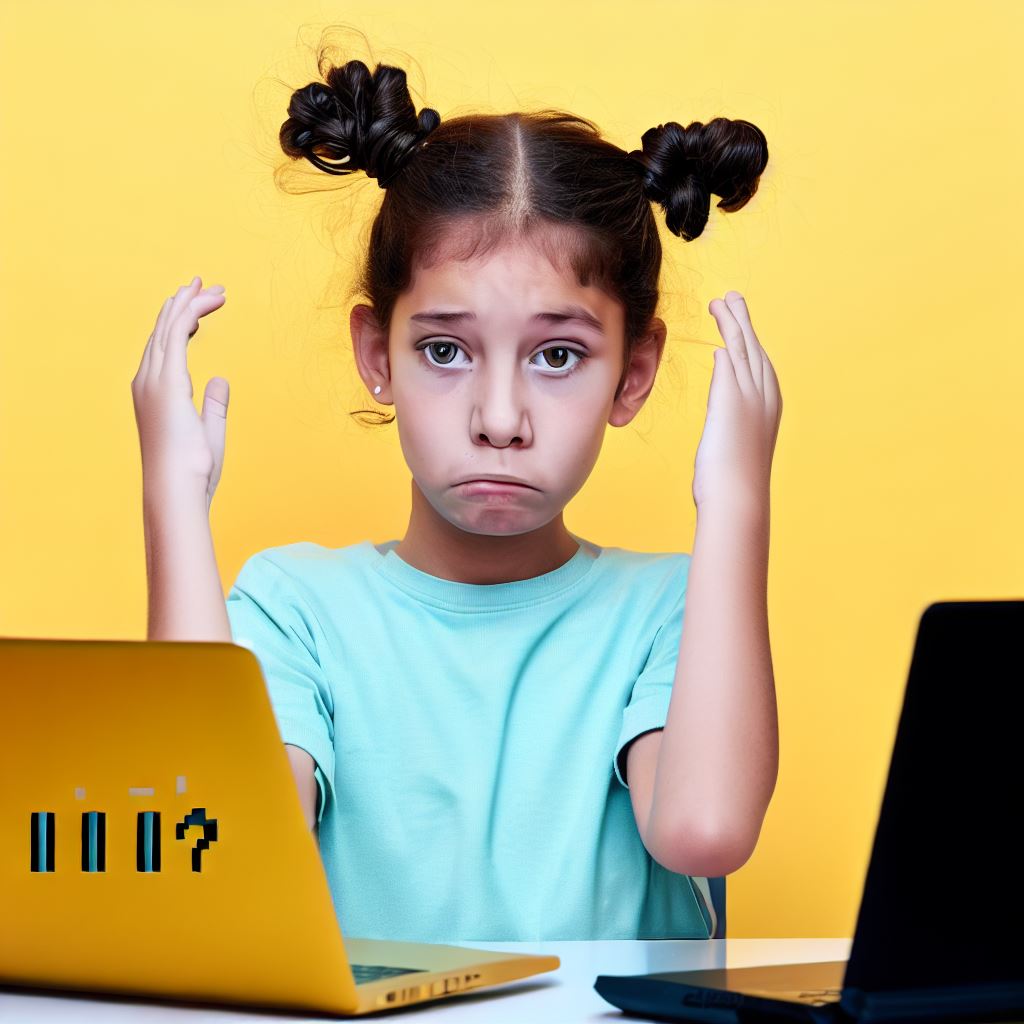Introduction
Scratch, a visual programming language, plays a pivotal role in education, offering students an engaging platform to learn coding and computational thinking.
In this blog post, we delve into how teachers are harnessing Scratch’s potential to elevate classroom learning, effectively incorporating it to enhance students’ educational experiences.
Scratch isn’t merely a coding tool; it’s a gateway to a world where students can transform their creative ideas into interactive projects.
Its significance lies in its user-friendly interface and versatility, making coding accessible to learners of all ages.
Teachers across the globe have recognized Scratch’s educational value. They are integrating it into their curriculum to foster problem-solving skills, creativity, and logical thinking among their students.
Scratch empowers students to become active creators in the digital age, rather than passive consumers.
This post will explore inspiring case studies, practical strategies, and real-world applications of Scratch in the classroom.
We will explore how Scratch, an indispensable tool for educators, shapes the way students learn and engage with technology.
Scratch spans various disciplines, from storytelling and game development to scientific simulations and artistic expressions.
So, let’s embark on this journey to witness how Scratch is transforming education, one interactive project at a time.
Benefits of Scratch in Classroom Instruction
Scratch in the classroom offers numerous benefits for both teachers and students.
As an educational tool, it goes beyond just teaching coding and programming; it supports the development of various essential skills and competencies.
Here are four key benefits of integrating Scratch into classroom instruction:
A. Promotes creativity and problem-solving skills
Scratch allows students to unleash their creativity and imagination. With Scratch, students can design and create their own interactive stories, games, and animations.
They have the freedom to choose their characters, environments, and backgrounds, enabling them to express their unique ideas and visions.
Tech Consulting Tailored to Your Coding Journey
Get expert guidance in coding with a personalized consultation. Receive unique, actionable insights delivered in 1-3 business days.
Get StartedIn the process, students learn to think critically, identify problems, and devise solutions.
Scratch’s block-based visual programming interface makes it easy for students to experiment, iterate, and test their ideas in a supportive environment.
B. Encourages collaborative learning and teamwork
Scratch fosters collaboration and teamwork among students.
The Scratch community offers various opportunities for students to collaborate on projects. They can work together on a single project, contribute their ideas and skills, and learn from one another’s strengths.
Students can share their projects with classmates, provide feedback, and engage in peer assessment.
Moreover, Scratch allows students to collaborate beyond their own classroom walls.
They can connect with peers from different schools and even different countries, broadening their perspectives and building global connections.
C. Fosters computational thinking and coding literacy
Using Scratch helps students develop computational thinking skills essential for problem-solving in the digital age.
Scratch’s block-based programming language allows students to practice decomposition, a process of breaking down complex problems into smaller, more manageable parts.
They learn to analyze problems, identify patterns, and create step-by-step instructions or algorithms to solve them.
Scratch also introduces students to coding literacy by familiarizing them with key programming concepts and constructs in a visual and engaging way.
This prepares them for future learning in computer science and other STEM subjects.
D. Develops digital fluency and technological competence
Scratch enables students to become digitally fluent and competent in using technology.
Through Scratch projects, students navigate the digital environment and learn to interact with various features, tools, and options.
Build Your Vision, Perfectly Tailored
Get a custom-built website or application that matches your vision and needs. Stand out from the crowd with a solution designed just for you—professional, scalable, and seamless.
Get StartedThey gain practical experience in using programming constructs, such as loops and conditionals, to control characters and objects in their projects.
They also explore using different media files, including images, sounds, and videos, to enhance their creations.
By developing digital fluency and competence, students become more confident and capable users of technology, and better prepared for the digital world.
In general, Scratch offers numerous benefits in classroom instruction. It promotes creativity, problem-solving skills, collaborative learning, and teamwork.
It fosters computational thinking and coding literacy, and it develops digital fluency and technological competence.
By integrating Scratch into the curriculum, teachers empower students to become active creators, critical thinkers, and confident users of technology.
Practical Applications of Scratch in Teaching
In today’s rapidly evolving technological landscape, Scratch has emerged as a powerful tool for teachers to engage and inspire their students in the classroom.
Its user-friendly interface and visual programming language make it accessible to students of all ages and abilities.
This section explores the practical applications of Scratch in teaching, focusing on its integration into STEM subjects and cross-disciplinary application in various educational areas.
A. Integration into STEM subjects
1. Math: Engaging students in interactive mathematics activities
Using Scratch, teachers can create engaging math activities where students can explore mathematical concepts in a visual and interactive manner.
Students can create animations to demonstrate geometric principles or develop interactive games to practice arithmetic skills.
2. Science: Simulating scientific experiments and simulations
By using Scratch, teachers can simulate scientific experiments and phenomena, allowing students to manipulate variables and observe the outcomes.
This enables students to develop a deeper understanding of scientific concepts and enhance their critical thinking skills.
3. Engineering: Encouraging design thinking and building prototypes
Scratch provides a platform for students to develop their engineering skills by encouraging them to think critically, problem-solve, and create prototypes.
Optimize Your Profile, Get Noticed
Make your resume and LinkedIn stand out to employers with a profile that highlights your technical skills and project experience. Elevate your career with a polished and professional presence.
Get NoticedStudents can design and code their own interactive simulations or construct models to demonstrate engineering principles.
4. Technology: Developing coding skills and ICT proficiency
Scratch serves as an excellent introduction to coding and fosters the development of computational thinking skills.
Through Scratch, students can understand fundamental coding concepts and gain proficiency in using ICT tools, preparing them for future careers in technology.
B. Cross-disciplinary application
1. Language arts: Creating interactive stories and narratives
Incorporating Scratch into language arts allows students to create interactive stories and narratives.
They can develop characters, plotlines, and dialogue, integrating multimedia elements such as sound and visuals to enhance the storytelling experience.
2. Social studies: Constructing educational games and quizzes
Scratch can be used in social studies to create educational games and quizzes that engage students in learning about historical events, geography, and cultural topics.
These interactive activities make learning more enjoyable and improve retention of information.
3. Art and music: Enabling creative expression through coding
By combining Scratch with art and music, students can explore their creativity and develop unique projects.
They can create digital art pieces that respond to user input or compose music using coding blocks, fostering a deeper appreciation for the arts while strengthening their coding skills.
In summary, Scratch offers endless possibilities for teachers to enhance their classroom instruction and engage students across various subjects.
Its integration into STEM subjects enables students to explore math, science, engineering, and technology in a hands-on and interactive manner.
Additionally, its cross-disciplinary application in language arts, social studies, art, and music promotes creativity, critical thinking, and collaboration.
By incorporating Scratch into their teaching practice, educators can empower their students to become active learners and creators in today’s digital world.
Read: How Schools Are Integrating Coding Games into Curricula
Case Studies: Real Examples of Incorporating Scratch in the Classroom
A. ScratchJr at Oakwood Elementary School: Enhancing critical thinking through Scratch-based challenges
At Oakwood Elementary School, ScratchJr is being used to enhance critical thinking skills among students.
Teachers have integrated ScratchJr into their curriculum, providing students with the opportunity to create their own interactive stories and games.
By using ScratchJr, students are able to think critically about the problem they want to solve and use programming concepts to bring their ideas to life.
This process allows them to develop problem-solving skills as they debug and iterate their projects.
For example, in a recent challenge, students were asked to create an interactive story that explored a social issue.
They had to design characters and write a storyline that communicated their message effectively.
Through this activity, students were able to analyze complex ideas and think critically about the message they wanted to convey.
The use of ScratchJr in the classroom has also helped foster collaboration among students. They often work in pairs or small groups, sharing ideas and troubleshooting problems together.
This collaborative approach not only improves their understanding of programming concepts but also enhances their teamwork and communication skills.
Furthermore, ScratchJr allows students to express their creativity and engage in self-directed learning.
They have the freedom to design their own characters, backgrounds, and sound effects, allowing their imaginations to come to life.
This creative aspect of ScratchJr motivates students to take ownership of their learning and explore their own interests.
B. Coding with Scratch at P.S. 333 Manhattan Beach: Fostering collaborative problem-solving with Scratch projects
P.S. 333 Manhattan Beach has incorporated coding with Scratch to foster collaborative problem-solving among its students.
Teachers have integrated Scratch into their computer science curriculum, providing students with the opportunity to work on Scratch projects in pairs or small groups.
By working collaboratively on Scratch projects, students learn to communicate and share ideas effectively. They brainstorm together, plan their projects, and contribute to each other’s code.
This collaborative problem-solving approach not only strengthens their understanding of programming concepts but also builds their teamwork and communication skills.
For instance, in a recent Scratch project, students had to design a game that required logical thinking and problem-solving.
They had to work together to debug their code and fix any errors that arose.
Through this process, they learned to troubleshoot problems and think critically about different solutions.
Moreover, coding with Scratch allows students to develop practical skills that are applicable in the digital world.
They learn to think computationally and understand the logic behind programming languages.
These skills are essential for their future success in a technology-driven society.
C. Classroom C: Developing digital literacy skills with Scratch simulations
In Classroom C, Scratch is being used to develop digital literacy skills among students.
Teachers have incorporated Scratch simulations into their lessons to help students understand abstract concepts in various subjects.
By using Scratch simulations, students can interact with virtual models and explore complex ideas in a hands-on manner.
For example, in a science lesson about the solar system, students can use Scratch to create a simulation that demonstrates the orbits of planets around the sun.
This interactive experience allows them to visualize and understand the abstract concept of planetary motion.
Additionally, Scratch simulations encourage students to experiment and explore different scenarios.
They can change variables in the simulation and observe the effects, helping them develop a deeper understanding of the concept being explored.
The use of Scratch in Classroom C also promotes creativity and innovation.
Students are encouraged to design their own simulations, allowing them to explore their interests and find creative solutions to problems. This fosters a sense of ownership and autonomy in their learning process.
Overall, these case studies exemplify the various ways teachers are using Scratch in the classroom today.
Whether it’s enhancing critical thinking skills, fostering collaborative problem-solving, or developing digital literacy, Scratch is proving to be a valuable tool for educators.
By actively engaging students in the learning process, Scratch empowers them to become creators and critical thinkers in an increasingly digital world.
Read: The Evolution of Scratch: From 1.0 to Present

Strategies for Implementing Scratch in Classroom Instruction
A. Integrate Scratch into the curriculum planning process
Integrating Scratch into the curriculum planning process ensures that it becomes an integral part of classroom instruction.
By aligning Scratch projects with learning objectives, teachers can enhance student engagement and achievement.
Teachers should identify opportunities across subjects and grade levels to incorporate Scratch into lesson plans.
This integration promotes cross-disciplinary learning and helps students develop critical thinking and problem-solving skills.
By mapping Scratch projects to curriculum standards, teachers can make learning more meaningful and relevant for students.
B. Provide professional development opportunities for teachers
Professional development opportunities are crucial to empower teachers to effectively use Scratch in the classroom.
Teachers should receive training on the fundamentals of Scratch programming and its educational benefits.
Workshops, seminars, and online courses can provide teachers with the necessary skills and knowledge to integrate Scratch effectively.
Experienced Scratch educators can serve as mentors and provide guidance to new teachers implementing Scratch.
Creating a supportive network of educators allows for collaboration and the sharing of ideas and best practices.
C. Encourage student-centered learning through Scratch projects
Scratch projects offer a unique opportunity for students to take ownership of their learning.
Teachers should encourage students to explore their creativity and pursue their own interests in Scratch projects.
By giving students a choice in project topics, teachers can foster autonomy, motivation, and self-direction.
Student-centered learning through Scratch projects promotes collaboration, communication, and problem-solving skills.
Teachers should provide ample opportunities for students to share their projects with peers and receive feedback.
D. Foster a supportive and inclusive learning environment
Creating a supportive and inclusive learning environment is essential for successful implementation of Scratch.
Teachers should establish clear expectations for behavior and collaboration during Scratch activities.
Encourage a growth mindset where students feel comfortable taking risks and learning from mistakes.
Teachers should foster a classroom culture that values diversity and celebrates the varied talents and perspectives of all students.
Providing opportunities for peer collaboration and feedback can enhance inclusivity and support the learning of all students.
E. Leverage online resources and communities for support and inspiration
Online resources and communities provide a wealth of support and inspiration for implementing Scratch in the classroom.
Teachers can access Scratch’s official website, which offers tutorials, example projects, and a community forum.
Online communities and social media groups allow teachers to connect with other Scratch educators and share ideas.
Teachers can explore Scratch educational resources created by other educators and adapt them to their own instruction.
By leveraging online resources, teachers can stay up-to-date with new Scratch features and engage in ongoing professional learning.
In short, implementing Scratch in the classroom requires thoughtful planning and strategic approaches.
Effective implementation includes curriculum integration, teacher training, student-centered learning, a supportive environment, and online resource utilization.
By following these strategies, teachers can enhance student engagement, develop critical thinking skills, and promote creativity in their classrooms.
Read: The Top 10 Coding Languages for Kids to Learn in 2024
Explore Further: Diversifying Your Coding Background: Front-End vs Back-End
Challenges and Solutions in Using Scratch as an Educational Tool
A. Limited resources and technical constraints
- Inadequate access to computers and internet connectivity can hinder Scratch implementation.
- Schools with limited budgets may struggle to provide enough devices for every student.
- Technical difficulties and glitches in the Scratch software might frustrate both students and teachers.
- Solution: Teachers can optimize the use of available resources by incorporating offline activities and small group collaborations.
- Collaborating with local organizations and seeking donations can help schools acquire more computers.
- Teachers should stay updated with troubleshooting techniques and provide technical support to students.
B. Resistance from reluctant teachers or lack of experience
- Some teachers may be hesitant to adopt Scratch due to their unfamiliarity with coding and computer science.
- Lack of experience with the software can lead to insecurity and resistance to integrating it into the curriculum.
- Solution: Training programs and professional development workshops can build teachers’ confidence in using Scratch.
- Peer mentoring and collaborations with experienced Scratch users can provide guidance and support.
- Administrators should foster a positive and supportive environment that encourages teachers to explore new tools.
C. Overcoming gender and diversity gaps in coding education
- There is a gender and diversity gap in computer science education, with less participation from girls and underrepresented groups.
- Stereotypes and societal expectations can discourage certain students from pursuing coding and STEM-related fields.
- Solution: Implement inclusive practices to create a welcoming environment for all students.
- Encourage girls and underrepresented students to participate in coding activities through targeted outreach programs.
- Showcase diverse role models and success stories to inspire students from all backgrounds.
- Provide opportunities for students to work on meaningful projects that address real-world problems.
By acknowledging and addressing these challenges, teachers can maximize the educational benefits of using Scratch in the classroom.
With the right support and resources, Scratch can serve as a powerful tool for enhancing students’ creativity, problem-solving skills, and digital literacy.
Read: How Coding Organizations Support Marginalized Communities in Tech
Conclusion
Scratch has proven to be an invaluable tool for teachers in the classroom today. Its importance and effectiveness cannot be emphasized enough.
Throughout this blog, we have explored the countless benefits, practical applications, case studies, and strategies of using Scratch in education.
From enhancing creativity and problem-solving skills to promoting collaboration and engagement, Scratch offers a plethora of advantages for both teachers and students.
The real-life success stories shared in this section demonstrate how Scratch has transformed learning experiences and improved learning outcomes.
Having witnessed the positive impact of Scratch, educators are strongly encouraged to embrace this platform and maximize its potential in their classrooms.
By providing students with opportunities to code and create, teachers can empower them to become active learners and critical thinkers.
Moreover, Scratch cultivates a growth mindset and fosters 21st-century skills that are essential for success in the digital era.
So, let us all join hands and embrace Scratch as a valuable tool for education, enabling us to unlock the full potential of our students and ensure better learning outcomes.




